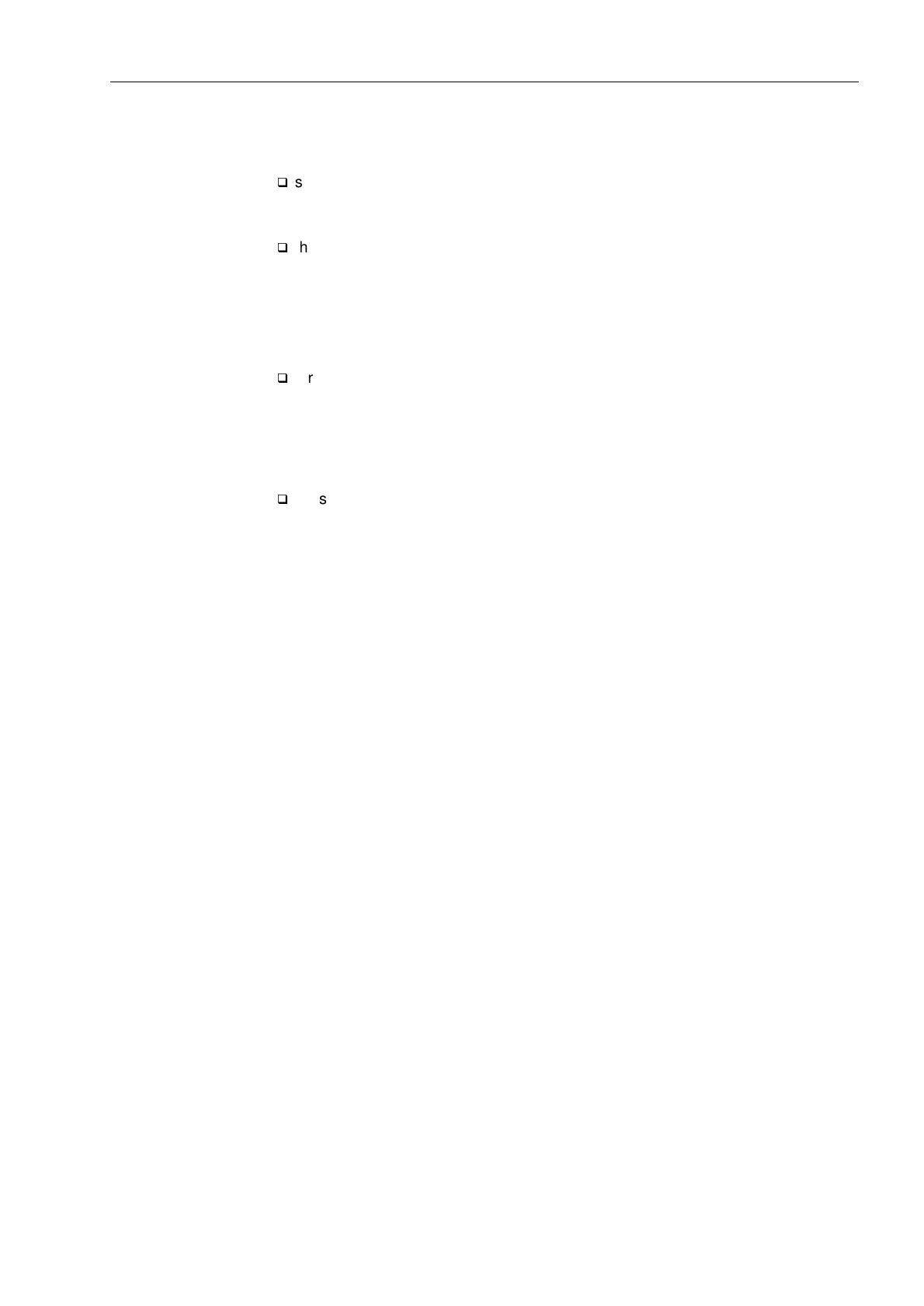Installation and Commissioning
8-477SA6 Manual
C53000-G1176-C133-1
binary input functions “!%)6WDUW/” and possibly “!%)UHOHDVH” (in
spontaneous or fault messages). Trip command depending on configuration.
q
single-pole starting by trip command of external protection in phase L3:
binary input functions “!%)6WDUW/” and possibly “!%)UHOHDVH” (in
spontaneous or fault messages). Trip command depending on configuration.
q
three-pole starting by trip command of the external protection via all three binary
inputs L1, L2 and L3:
binary input functions “!%)6WDUW/”, “!%)6WDUW/” and “!%)6WDUW/”
and possibly “!%)UHOHDVH” (in spontaneous or fault messages). Trip command
three-pole.
For common phase starting:
q
three-pole starting by trip command of the external protection:
binary input functions “!%)6WDUWSROH” and possibly “!%)UHOHDVH” (in
spontaneous or fault messages. Trip command depending on configuration.
Switch off test current.
If BF start is possible without current flow
q
BF start by trip command of the external protection without current flow:
binary input functions “!%)6WDUWZR,” and possibly “!%)UHOHDVH” (in
spontaneous or fault messages). Trip command depending on configuration.
Busbar tripping For testing the distribution of the trip commands in the substation in the case of
breaker failures it is important to check that the trip commands to the surrounding
circuit breakers is correct.
The surrounding circuit breakers are all those which need to trip when the feeder
circuit breaker fails. These are therefore the circuit breakers of all feeders which feed
the busbar or busbar section to which the feeder with the fault is connected.
A general detailed test guide cannot be specified because the layout of the
surrounding circuit breakers largely depends on the switchgear topology.
In particular with multiple busbars the trip distribution logic for the surrounding circuit
breakers must be checked. Here it should be checked for every busbar section that all
circuit breakers which are connected to the same busbar section as the feeder circuit
breaker under observation are tripped, and no other breakers.
Tripping of the
Remote End
If the trip command of the circuit breaker failure protection must also trip the circuit
breaker at the remote end of the feeder under observation, the transmission channel
for this remote trip must also be checked. This is done together with transmission of
other signals according to section 8.3.12.3.
Termination All temporary measures taken for testing must be undone, e.g. especially switching
states, interrupted trip commands, changes to setting values or individually switched
off protection functions.

